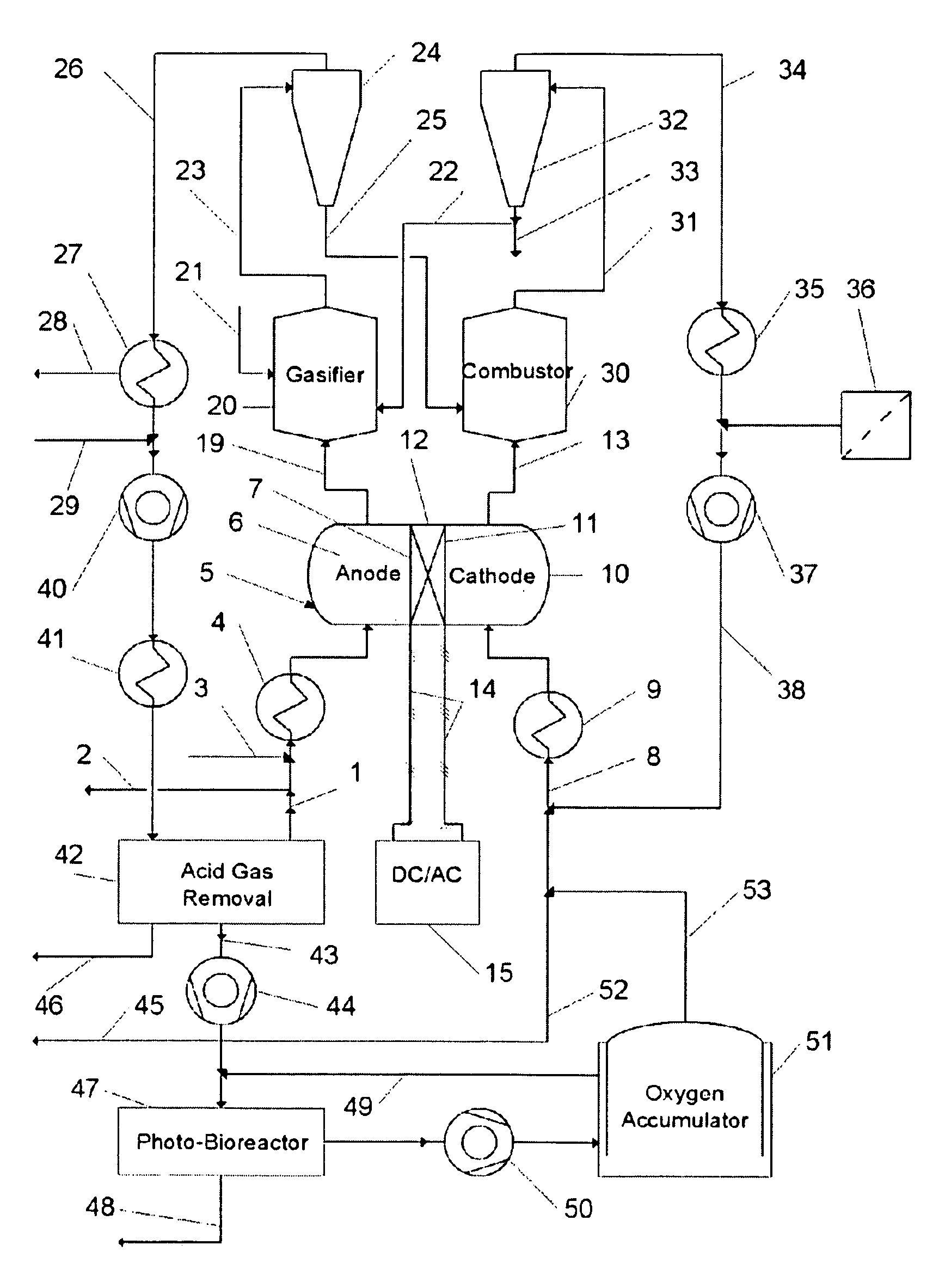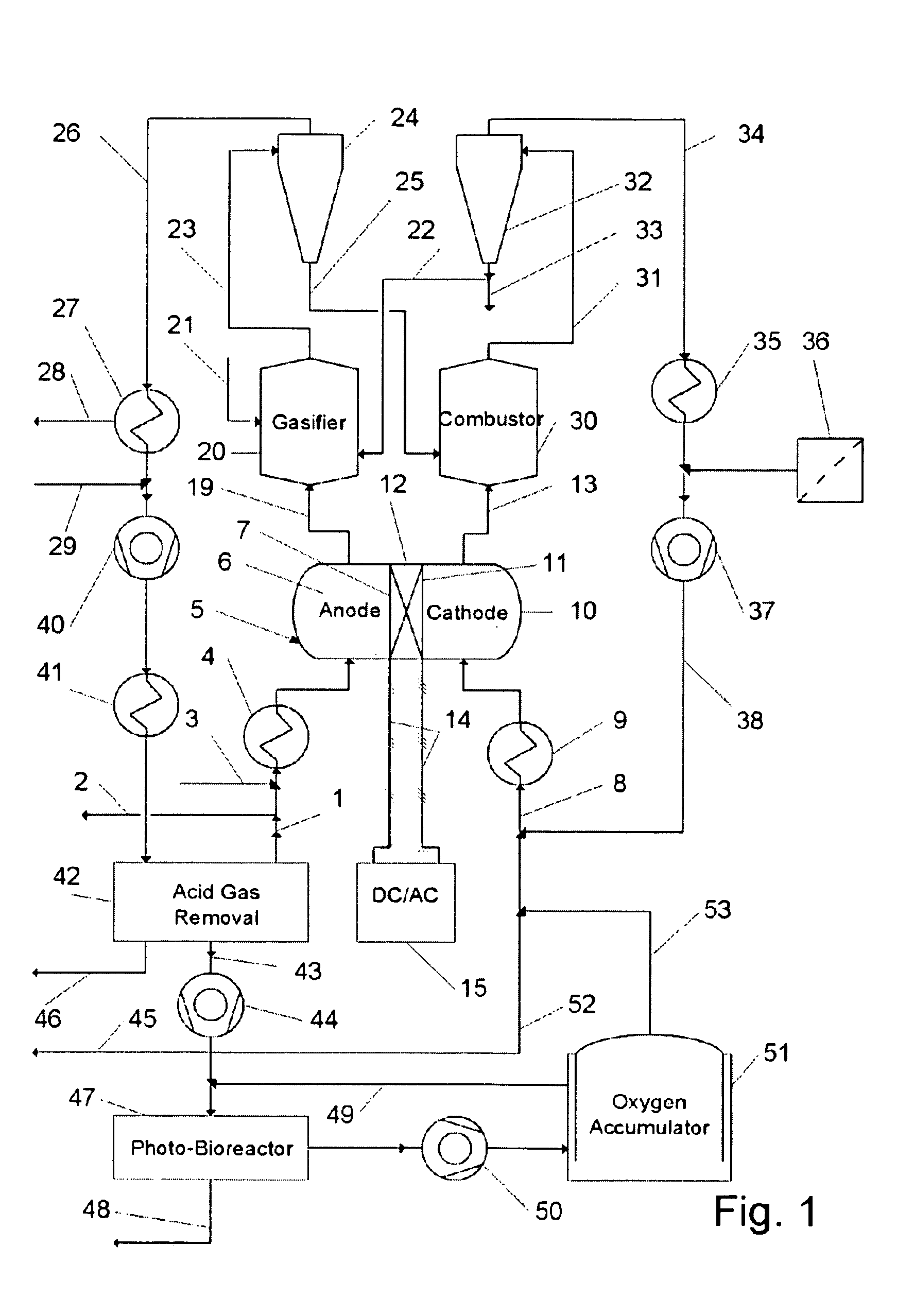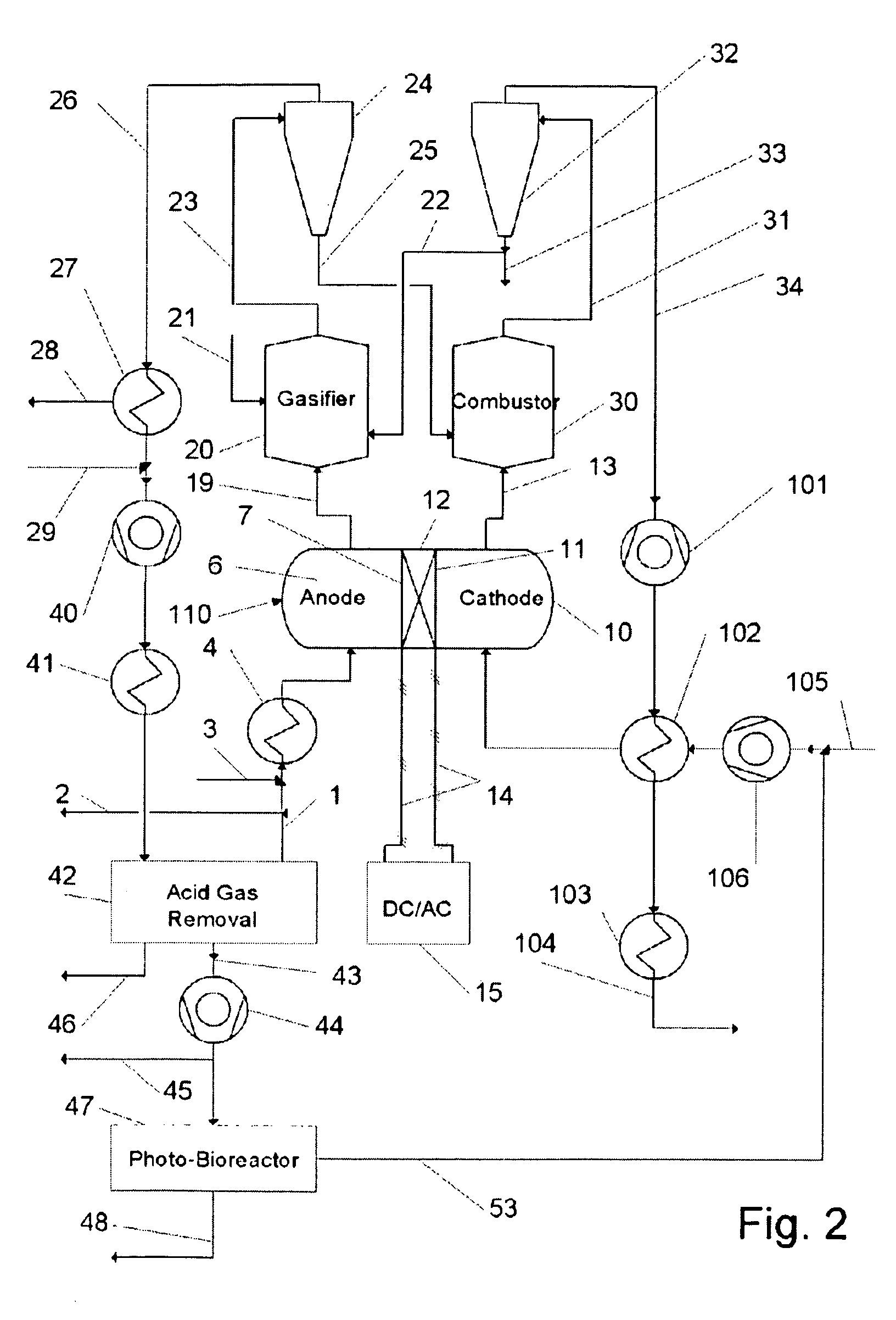Electricity, heat and fuel generation system using fuel cell, bioreactor and twin-fluid bed steam gasifier
a fuel cell and fuel cell technology, applied in the direction of combustible gas catalytic treatment, combustible gas production, sustainable manufacturing/processing, etc., can solve the problems of increasing the heat content of synfuel, reducing the volume of synfuel needed to be treated, and difficult to achiev
- Summary
- Abstract
- Description
- Claims
- Application Information
AI Technical Summary
Benefits of technology
Problems solved by technology
Method used
Image
Examples
Embodiment Construction
—PREFERRED EMBODIMENT (DUAL LOOP MOLTEN CARBONATE FUEL CELL)
[0072]A preferred embodiment of the system is shown in FIG. 1. After removing most of the carbon dioxide and hydrogen sulfide in an acid gas removal system, 42, synthetic fuel gas leaves the gas removal system through the fuel gas supply line 1. After removing a portion of the gas for external consumption through a Fuel Gas Export Line 2, steam is added to the remaining fuel through a De-coking Steam Line 3 to prevent coking (carbon plating) on upstream equipment. If necessary, fuel can be heated in a Fuel Gas Pre-heater 4 to maintain the operating temperature of the Molten Carbonate Fuel Cell (MCFC) Assembly 5. In this assembly, fuel in the Fuel Cell Anode Compartment 6 reacts with carbonate ions to form carbon dioxide and steam and electrons. Because of the high temperatures of the fuel cell, hydrocarbons in the fuel can be reformed, to produce carbon monoxide, then phase shifted to produce additional hydrogen using the f...
PUM
 Login to View More
Login to View More Abstract
Description
Claims
Application Information
 Login to View More
Login to View More - R&D
- Intellectual Property
- Life Sciences
- Materials
- Tech Scout
- Unparalleled Data Quality
- Higher Quality Content
- 60% Fewer Hallucinations
Browse by: Latest US Patents, China's latest patents, Technical Efficacy Thesaurus, Application Domain, Technology Topic, Popular Technical Reports.
© 2025 PatSnap. All rights reserved.Legal|Privacy policy|Modern Slavery Act Transparency Statement|Sitemap|About US| Contact US: help@patsnap.com



